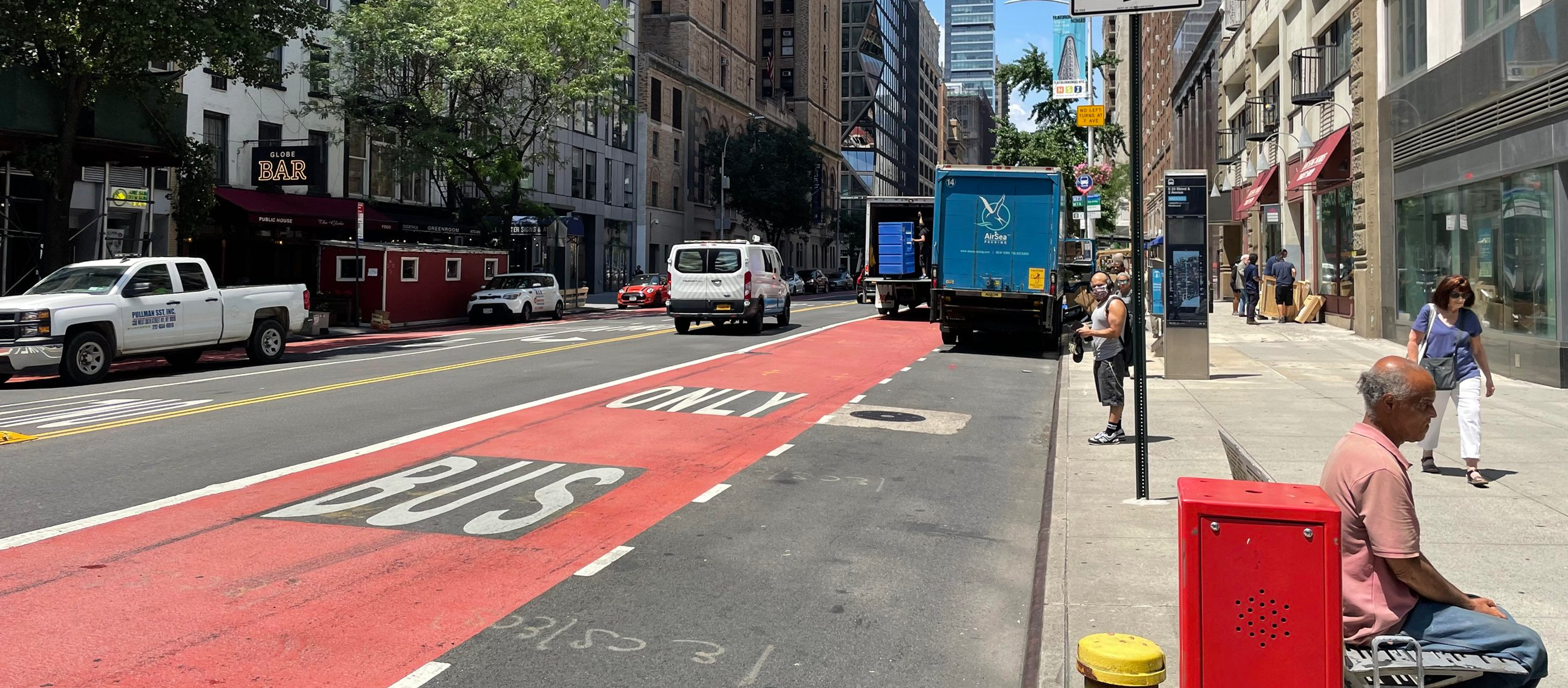Keeping bus lanes clear for buses reduces GHG emissions. Here's how
Hayden AI
info@hayden.ai
Cars and trucks illegally parked in bus lanes slow down transit riders – and increase emissions from buses. We built a tool to help transit agencies see how many carbon emissions they can reduce by deploying technology to keep bus lanes clear.

Bus lanes help keep buses moving on time. But when cars and trucks are illegally parked there, buses get massively delayed – increasing trip length and carbon emissions. Average bus speeds across the United States reach no more than 12 mph. In New York City, that average speed is less than 8 mph.
Hayden AI’s automated bus lane enforcement platform can help transit agencies increase bus speeds – and reduce emissions – by keeping bus lanes clear for buses. By scaling bus lane enforcement with cameras powered by artificial intelligence, transit agencies can change driver behavior to significantly reduce illegal parking in bus lanes.
We built an emissions calculator to help transit agencies calculate how many greenhouse gas emissions they can reduce by deploying our automated bus lane enforcement platform. Using publicly available data from the Bureau of Transportation Statistics, past ABLE deployments, and the EPA’s Greenhouse Gas Equivalencies Calculator, our calculator outputs the number of metric tons of GHG emissions saved by ABLE and what these amounts mean in an everyday context, such as gallons of gas saved or number of smartphones charged.
Here’s how our calculator works: We multiplied the number of buses operating on bus lanes by average mileage for transit buses per year using National Transit Database data. Next, we multiplied that number by the average miles per gallon for buses in the US, which is 3.4 mpg. We converted this number to gallons of CO2 emissions, then metric tons of CO2. To estimate how Hayden AI’s Automated Bus Enforcement platform could reduce your emissions, we divided this number by 0.3, as the MTA found that automated bus enforcement increased bus speeds by 30%. We used the EPA’s Greenhouse Gas Equivalencies Calculator to equate these emissions savings into various measures for comparison.
The environmental benefits of increasing bus speeds are clear. At Hayden AI, we're proud that our mobile perception platform can help transit agencies advance their environmental goals.
About Hayden AI
Hayden AI is a global leader in artificial intelligence and geospatial analytics. Led by a team of experts in AI, computer vision, data science, transportation, and government technology, Hayden is building the future of real world problem solving for governments and businesses.
Learn About Our Solutions for Transit Buses